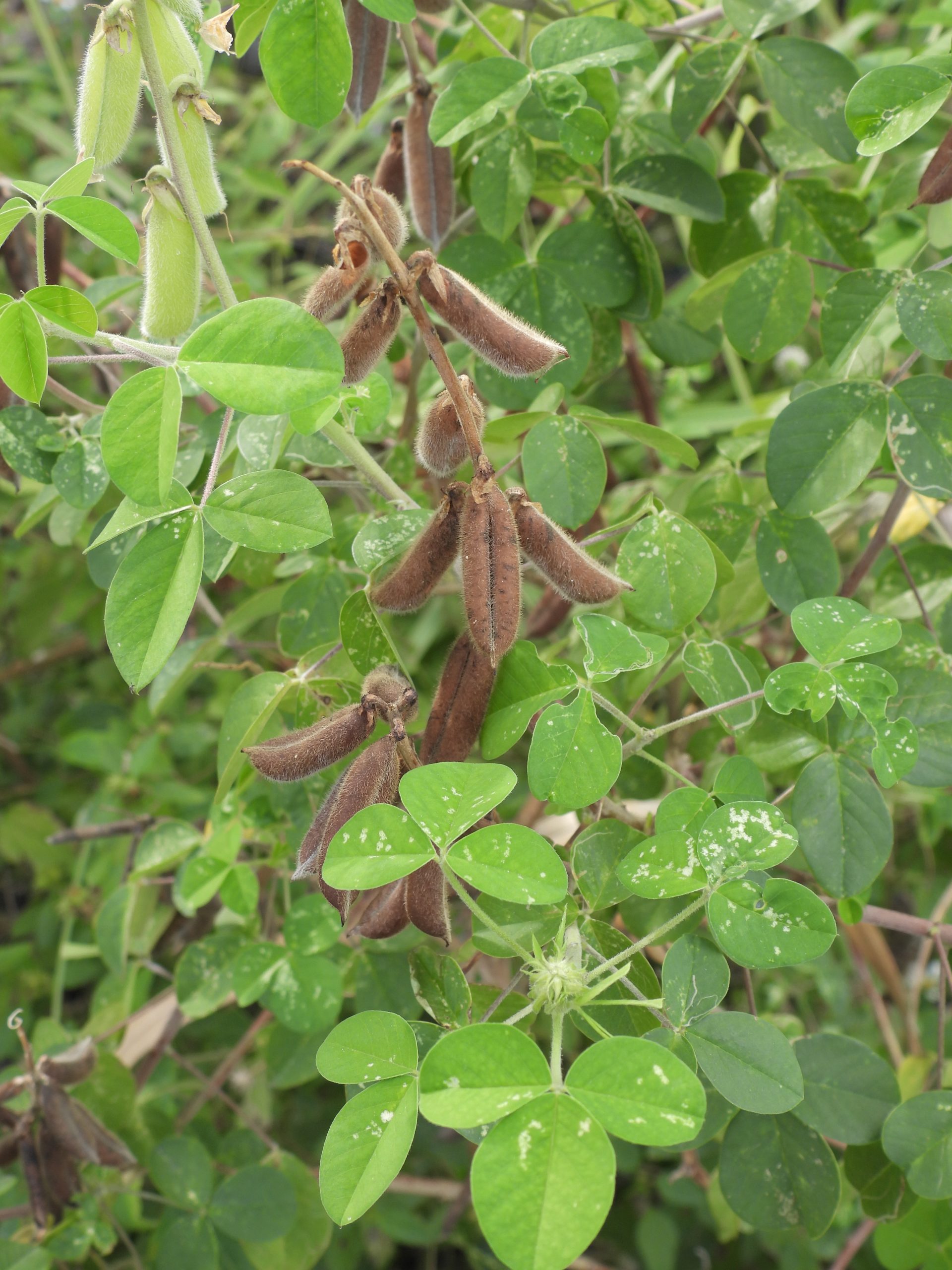Habit: Crotalaria goreensis grows as an annual or short-lived perennial to 1.5 m in height (usually shorter). New vegetation is glabrous to pubescent. The trifoliate leaves are arranged alternately, leaflets oblanceolate with a round leaf apex, an entire margin and are ab- and adaxially pubescent. There are oblong stipules at the base of the petiole
The complete, perfect, zygomorphic flowers are terminal or axillary racemes. The calyx has 5, partially fused, pubescent green sepals forming a tube with the sepal lobes the same length as the tube. The corolla has 5 yellow petals, the upper enlarged to form the banner and the lower 2 fused to form the keel. The petals may have an orange to purple tinge. There are 10 diadelphous stamens. The ovary is superior and has a single locule with numerous seeds. The fruit is a brown legume that becomes inflated and is up to 2 cm in length at maturity with dense pubescence. Before dehiscence the seeds become loose within the legume and make a rattling sound.
Habitat: Crotalaria goreensis grows in Human Altered environments (old fields, yards roadsides).
Distribution: Crotalaria goreensis is NOT native to the Lucayan Archipelago but occurs in the central and northern island groupings. It is native to Africa and Asia. It is widespread now in tropical and subtropical regions throughout the world.
Medicinal/Cultural/Economic usage: Crotalaria sp. has been used to treat colds in the Lucayan Archipelago. It is not currently known if Crotalaria goreensis has been used in this way.
It is considered toxic to live stock.

